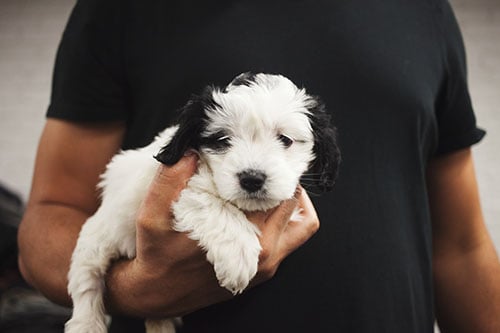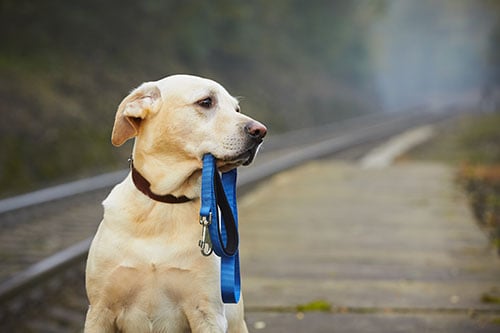Wildfires are just one reason you may need to grab your pet and evacuate in a moment’s notice in Pagosa Springs. Learn how to prepare in advance so you’re ready to run in case of an emergency.

- Make a plan
- Build an emergency kit for your pet
Wildfire Smoke and Animals American Veterinary Association
Are you Petpared for Disaster? FEMA
Build an Emergency Kit
Are you prepared to take care of your pet when a disaster strikes? If not, NOW is the time to stock up on the items that you will need so you will not get caught unprepared. It may just make the difference in being able to keep your pet alive when a disaster strikes.
Just as you do with your family’s emergency supply kit, think first about the basics for animal survival, such as food and water. Have two kits, one larger kit if you are sheltering in place and one lightweight version for if you need to evacuate. Review your kits regularly to ensure that their contents, especially foods and medicines, are fresh.
Here are some items you may want to include in an emergency kit for your pet:

- FOOD
A food bowl and a week’s supply of food in an airtight, waterproof container. Include a spoon and can opener if necessary for wet food. - WATER
A water bowl and week’s supply of water. Water not suitable for humans to drink is not suitable for pets either. - MEDICINE
Always have on hand at least a (2) week supply in a waterproof container, since your vet may not be able to open right away to fill a prescription. - COLLAR, TAG AND LEASH
A leash, harness, backup leash, collar, updated ID and rabies tag. We recommend microchipping your pet as a more permanent form of identification. Keep a proper fitting dog harness and at least a 6 foot long leash with your disaster supplies to be used when you walk your pet – this is a stressful time for pets too, and a frightened animal can slip out of a collar, but not a harness. - DOCUMENTS
Copies of your pet’s health records (veterinarian’s contact info, medical conditions, vaccinations, etc.), registration information, and other relevant documents in a waterproof container and available electronically. - PET CARRIER OR CRATE
Traveling bag, crate, or sturdy carrier for each pet. Be sure the cage is large enough to give the animal room to lie down and spread out, and has extra space for a litter box if necessary. During wildfire season be sure to have crates ready to grab and go with just a moment’s notice. - SANITATION
Pet litter, scoop and litter box (if appropriate); newspapers, paper towels, pooper scooper, plastic trash bags, and disinfectant to provide for your pet’s sanitation needs. - CLEANING SUPPLIES
Small container of soap for washing out your pet’s food dish. You’ll also need rags or paper towels for drying dishes and other cleanup. Grooming items such as pet shampoo. - FIRST AID KIT
Check with your veterinarian to find out what he/she recommends you include in your first aid kit some suggested items include:- First aid book
- Conforming bandage (3″ x 5″)
- Absorbent gauze pads (4″ x 4″)
- Absorbent gauze roll (3″ x 1 yard)
- Cotton tipped applicators (1 small box)
- Antiseptic wipes (1 package)
- Emollient cream (1 container)
- Tweezers and scissors
- Instant cold pack
- Latex disposable gloves (several pairs)
- Proper fitting muzzle
- PHOTOS
A picture of you and your pet together. If you become separated from your pet during an emergency, a photo will help you document ownership and allow others to assist you in identifying your pet. - FAMILIAR ITEMS
Put favorite toys, treats or bedding in your kit. Familiar items and smells can help reduce stress for your pet.

